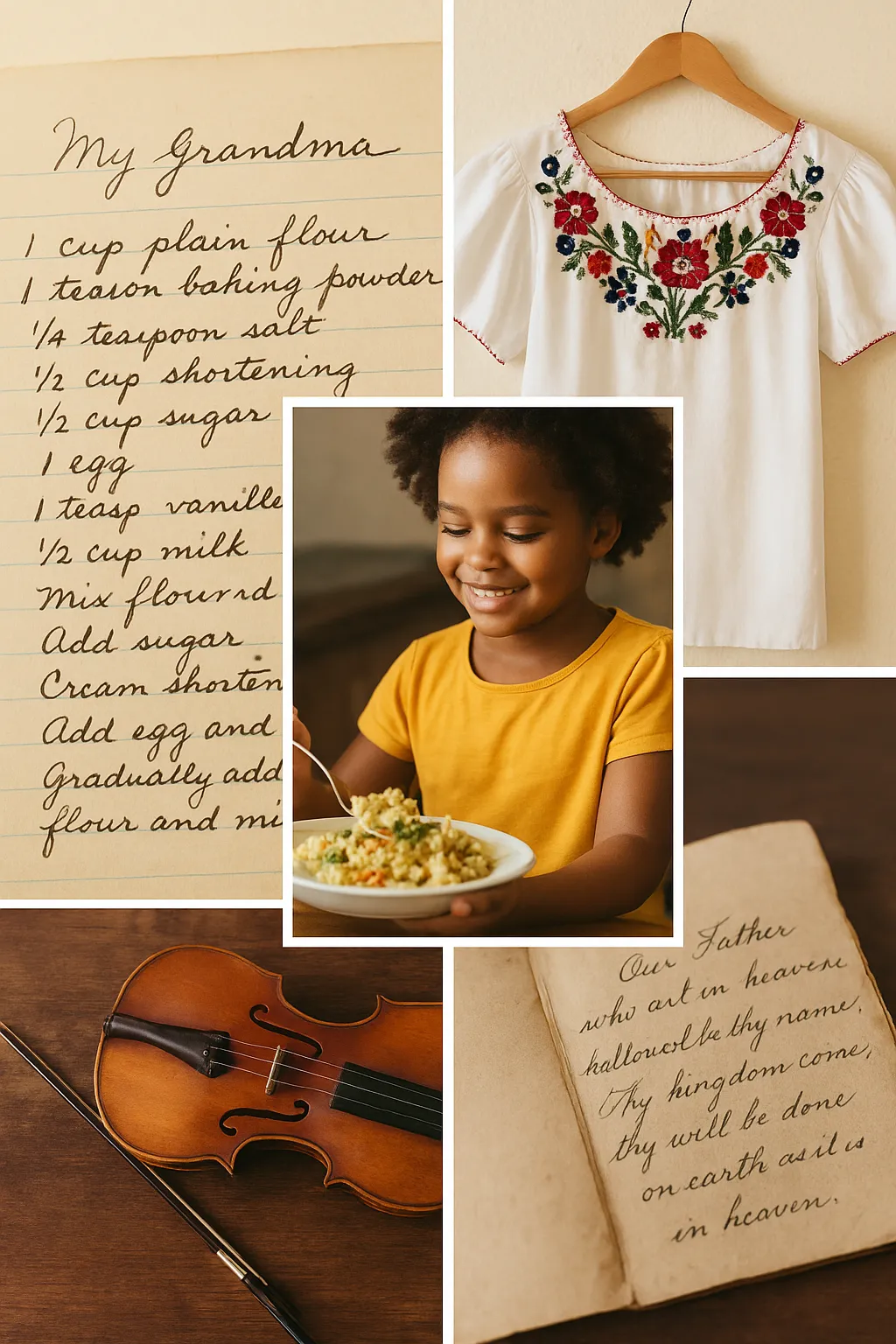
Beyond Borders: Discovering Our Ancestors' Cultural Footprints
Beyond Borders: Discovering Our Ancestors’ Cultural Footprints
In the quiet corners of our homes — the aroma of a favorite dish, the melody of an old lullaby, or the flicker of a holiday candle — traces of our ancestors linger. These are not just comforting rituals; they are cultural imprints passed down through generations, shaped by the countries, customs, and communities our families once called home.
This blog invites you to step beyond the borders of traditional genealogy and explore the living legacy of your ancestors’ cultural heritage. Food, music, religion, clothing, and traditions are all vibrant clues that enrich your family history and connect you more deeply to your roots.
A Taste of Heritage: Recipes as Family Time Capsules
Many family traditions begin in the kitchen. Handwritten recipe cards stained with oil and love often carry more than ingredients — they carry stories. Whether it’s your grandmother’s pierogis, your father’s Caribbean curry, or your aunt’s homemade baklava, every dish has a geographic and cultural origin.
Documenting these recipes, asking about their backstories, or even cooking them alongside a relative can spark revealing conversations. A seemingly simple dish might trace back to a historical migration, religious observance, or regional festival.
Tips:
Interview relatives about their favorite dishes growing up
Photograph or scan old recipe books
Record the cooking process and turn it into a video recipe archive
Soundtracks of the Past: Music and Dance
Music is a powerful cultural carrier. Songs, chants, or lullabies passed down can point to religious affiliations, resistance movements, or celebratory traditions.
Perhaps your great-grandfather played the fiddle at Nova Scotian ceilidhs, or maybe your ancestors sang in a Yiddish choir or African drumming circle. By revisiting the music of your family’s past, you open doors to understanding migration stories, hardships, and celebrations.
What to Explore:
Ask older relatives to sing or describe music from their childhood
Look for community or church songbooks
Research folk music from ancestral homelands and how it changed through immigration
Faith and Festivities: Religion’s Role in Family Identity
Religious practice often shapes holidays, naming traditions, life events, and values passed through generations. These faith expressions may adapt over time — an Orthodox ritual might evolve into a simple blessing before meals — but their roots still run deep.
Understanding your ancestors’ religious identities can also help you navigate church records, baptismal certificates, and burial customs in genealogical research.
Family History Insights:
Explore ancestral places of worship (some offer archives of parishioners)
Document holiday customs and how they’ve evolved
Interview elders about sacred objects, prayers, or traditions they remember
Heirlooms in the Wardrobe: Traditional Clothing
Whether it’s a sari kept in a cedar chest or a Scottish clan kilt worn at weddings, traditional clothing can symbolize identity, region, or even marital status. These items are rich with cultural symbolism and personal meaning.
If you’re lucky enough to have these heirlooms, document them. If not, look to old photos or ethnic heritage festivals to research what your ancestors may have worn.
Ideas:
Ask relatives if they remember traditional clothing being worn and when
Scan photos and annotate clothing details
Recreate or preserve items in shadow boxes or digital collections
Cultural Traditions that Travelled
From storytelling customs to birth and burial rites, many practices traveled with immigrants and adapted in the New World. These traditions — once vital for survival or solidarity — may now seem quaint, but they’re clues to your family’s worldview and the values they held dear.
Some families maintain cultural clubs, language schools, or holiday rituals that connect them to their ancestral countries. Even superstitions or sayings (“Knock on wood!”) may reflect centuries-old beliefs from a homeland far away.
Research Tips:
Visit cultural centers or museums in your area
Interview family members about holiday practices or odd customs
Read up on the traditions of your ancestors’ regions and see what matches your family’s stories
Weaving It All Together: Building a Cultural Portfolio
Genealogy isn’t just about names and dates — it’s about the people behind them. As you explore your family’s cultural footprint, start compiling what you learn into a digital or printed "Cultural Heritage Portfolio."
Include:
Scans of recipes, song lyrics, or prayer cards
Photos of traditional clothing or tools
Descriptions of rituals, dances, or annual customs
Family interviews and stories behind each item
This portfolio becomes a living document, one that grows with each generation and can be shared at family reunions, online, or passed down as part of your legacy.
A Living Heritage
Culture evolves. It’s shaped by history, migration, intermarriage, and personal choice. Don’t worry if your family traditions have shifted or if some were lost — rediscovering and reviving them is part of the journey.
You might light a candle your great-grandmother once lit, cook a stew your ancestors made for harvest festivals, or teach your children a song your grandfather sang. Each act brings the past into the present, honoring not only where you come from — but how far your family has come.


